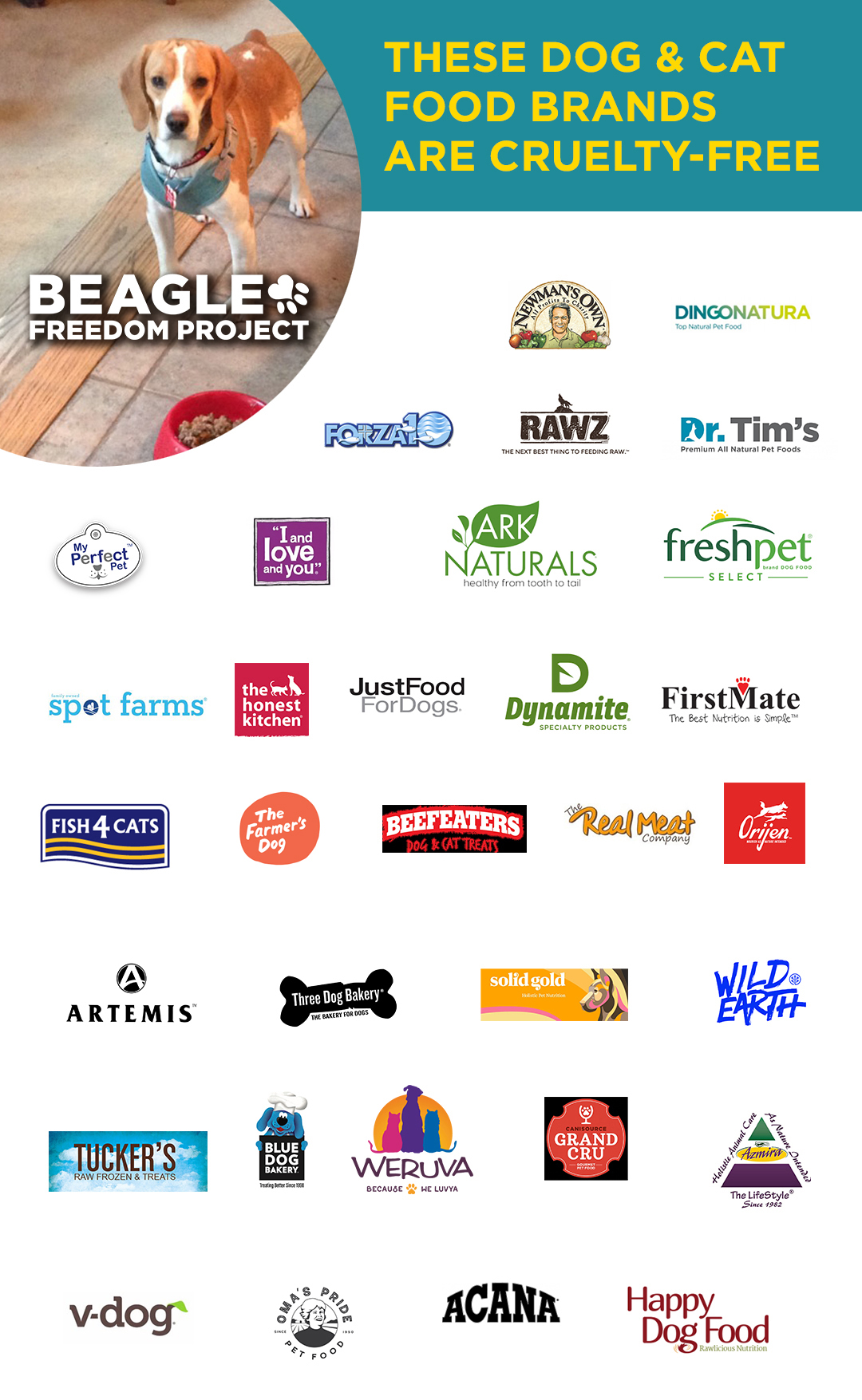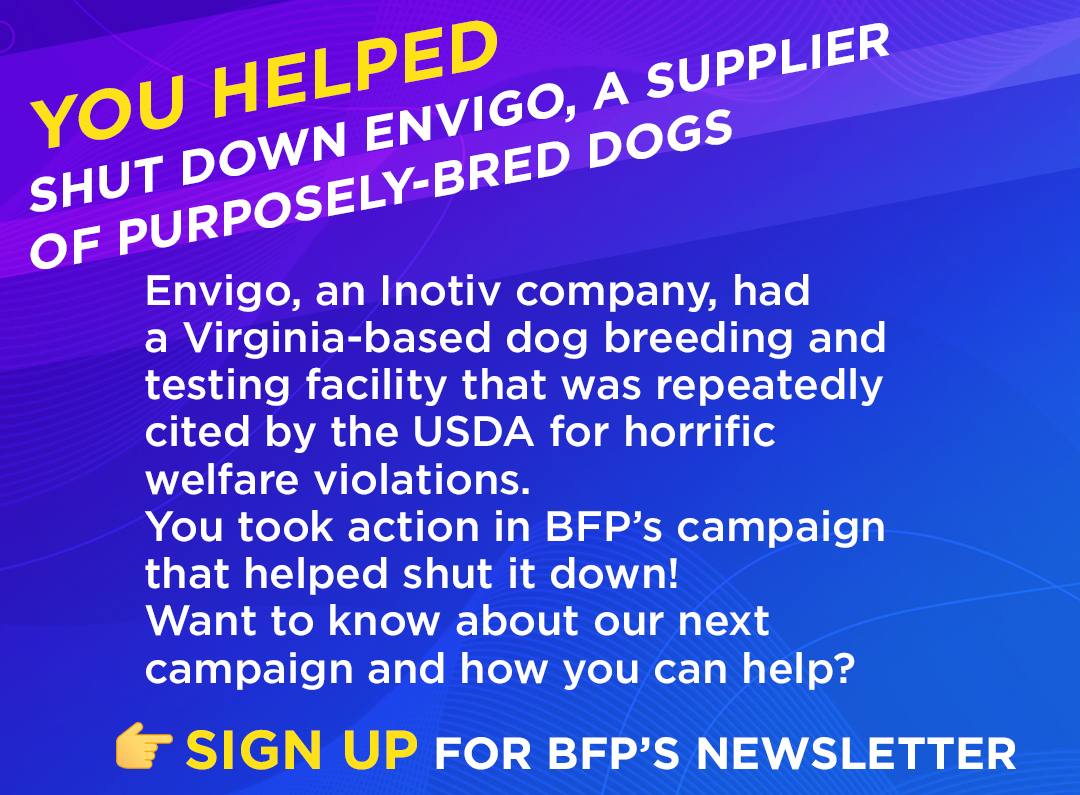When most people imagine testing for dog and cat food, they picture animals excitedly waiting for kibble to fill their bowls, tongues out and tails wagging, before rushing over to scarf it down.
But the sad truth is, most dog and cat food on store shelves—from kibble to canned food to treats—has been tested in a laboratory on animals confined to small cages, deprived of love, and subjected to cruel, invasive experiments.
Behind closed doors at Big Kibble 💀
Some companies claim that laboratory testing is necessary to ensure dog food is safe. In reality, there are numerous safe, cruelty-free dog food brands on the market. So, why do companies continue to conduct cruel animal tests when they’re not necessary? The answer lies in how the industry is regulated.
While the FDA monitors the safety of ingredients used in dog food, the AAFCO plays an arguably more influential role by providing industry guidelines on nutrition requirements. Many brands want the AAFCO’s seal of approval as a “complete and balanced” dog food—and to do this, they must conduct a feeding trial.
Unfortunately, almost all feeding trials are performed in laboratories on dogs bred for this purpose. “Purposely-bred” dogs spend their entire lives as test subjects, going from cage to cage, forced to endure unimaginable pain. Most of these dogs will never walk on grass, feel the sun on their face, or experience a loving human touch—they are born, raised, and killed in laboratories. 💔
In fact, these dogs are specifically bred to be submissive to abuse. Marshall BioResources (MBR), a leading supplier of purposely-bred dogs in the UK, makes this clear on its website: “These dogs display everything one should expect from a typical Marshall Beagle®, including the same calm and gentle temperament.” Learn more about MBR and what our UK allies at Camp Beagle are doing to shut it down. 🇬🇧
Thankfully, as these inhumane practices continue to be exposed, more customers and brands are demanding an alternative, cruelty-free approach.
How cruelty-free dog food is tested 🐕
Today, companies can choose to conduct humane feeding trials in which dogs don’t live in a laboratory or undergo any invasive tests. In fact, the AAFCO’s rules for these smaller, alternative trials are quite simple: have at least 8 healthy adult dogs eat only the trial food for at least 26 weeks, and monitor their health by weighing them weekly and performing periodic blood tests.
Some companies’ employees even volunteer their own dogs for feeding trials, such as KetoNatural Pet Foods Founder Daniel Schulof. “A certain amount of testing is a necessary part of introducing a new dog food product to the public,” says Schulof. “But for me, the only fair and ethical way to conduct those tests was to use our own beloved dogs as subjects.”
Shop cruelty-free for your four-legged loved ones 🐶 😺
It’s easy to shop cruelty-free for your dogs and cats with BFP’s Cruelty-Cutter app! Simply open the app and scan a product’s barcode to see if it’s been tested on animals. You can also browse the cruelty-free directory for dog and cat food and other animal needs like grooming care, health aids, harnesses, and more—plus tons of products for humans, too.
For easy reference, below is a list of dog food brands that are cruelty-free and those that aren’t—keep it handy for when your pup needs more kibble to nibble! 🐾


The bottom line 🙌
While many dog food brands still use cruel testing methods, the number of cruelty-free brands continues to grow each year. BFP will keep fighting for a future in which no dog has to suffer in a laboratory, and we hope you’ll join us! Learn more about how you can shop cruelty-free and support companies that truly love animals by visiting Cruelty-Cutter.org. ❤️






